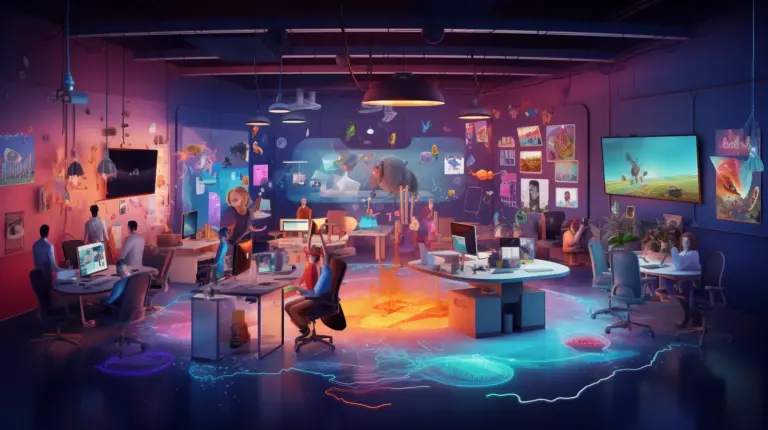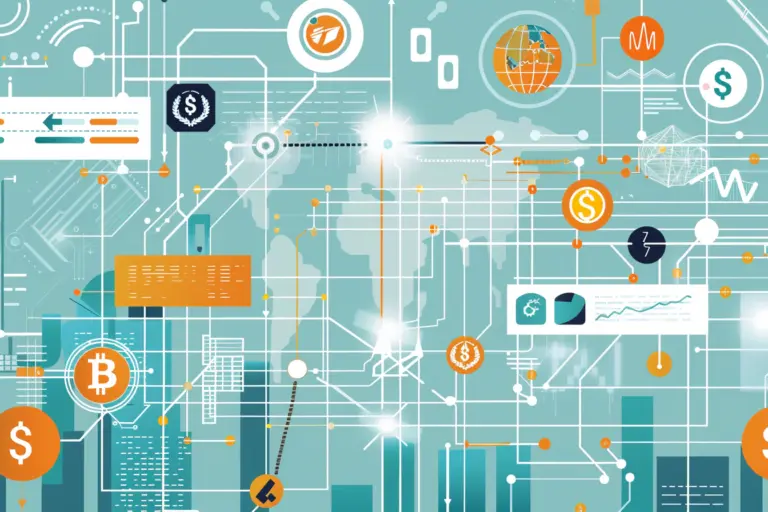The digital landscape is constantly evolving, pushing boundaries and introducing exciting new channels for brands and businesses to engage with customers. If you’ve been keeping pace with recent technological trends, you may have encountered a buzzword that is taking the digital sphere by storm: the Metaverse. But what exactly is the Metaverse, and more importantly, why should it be seen as an essential digital channel for customer interaction?
What is the Metaverse?
The term ‘Metaverse’ is a combination of ‘meta’, meaning beyond, and ‘universe’, an expansive realm that goes beyond the traditional physical universe. At its core, the Metaverse is a collective virtual shared space that includes the sum of all virtual worlds, augmented reality, and the internet. It’s a universe of digital twins where individuals can interact not only with each other but also with sophisticated AI systems in a fully immersive 3D environment. Think of it as a fusion of multiple elements of today’s online shared experiences, all built and connected in the realm of virtual reality.
While the Metaverse may sound futuristic, in many ways, it’s already here. From social VR platforms (virtual reality) to MMORPGs (Massively Multiplayer Online Role-Playing Games) to interactive AR experiences (augmented reality), we are still witnessing the Metaverse’s early iterations.
Why the Metaverse should be seen as a Digital Channel
The Metaverse’s potential as a new digital channel lies in its unprecedented interactivity and engagement levels. It provides a highly immersive, 3D experience that can simulate real-world interactions in a way that conventional digital channels can’t.
With the Metaverse, you can go beyond presenting flat 2D product images to your customers; you can enable them to interact with your products in a 3D virtual environment. Want to launch a new clothing line? Don’t just show your customers images or videos, let them try on the clothes in the virtual world. Want to release a new real estate development? Don’t just provide virtual tours, allow your customers to experience the space as if they’re physically there.
Let’s dig into some specific examples and showcases:
1. Virtual Showrooms and Shopping Experiences
In the Metaverse, businesses can build virtual showrooms where customers can interact with products as they would in the physical world. For instance, IKEA could create a digital twin of its catalog, where customers walk through a virtual store, explore different rooms, and even interact with the furniture. They can ‘see’ how a particular chair looks in a given room setup, ‘sit’ on it to get a feel for its size, or ‘open’ a cabinet to see its interior design – all from their living room.
2. Virtual Product Trials
The Metaverse can also be used for virtual product trials, which can be particularly useful for industries such as automotive, real estate, and fashion. Car companies, for instance, can allow potential buyers to ‘test drive’ new models in various road and weather conditions.
3. Live Events and Concerts
Live events and concerts can be hosted in the Metaverse, allowing users worldwide to attend without any geographical restrictions. Epic Games’ Fortnite has already begun exploring this concept, having hosted virtual concerts with millions of attendees. These events provide a new way to engage fans and offer novel experiences – imagine attending a concert on a floating stage in the sky or on a volcanic island.
4. Education and Training
The Metaverse provides an immersive environment for education and training, which can be leveraged by universities, schools, and corporations. Imagine a medical student practicing surgery in a controlled, risk-free environment or an engineer learning to operate new machinery without the cost of physical prototypes.
5. Co-Creation and User Generated Content
The Metaverse can encourage and facilitate co-creation, allowing customers to become active participants in creating products, services, or experiences. A fashion brand, for example, could allow its customers to design their own clothes in the Metaverse, providing a highly personalized experience.
As these examples show, the Metaverse, as a digital channel, allows for an unparalleled level of interaction, personalization, and engagement. It enables businesses to create immersive customer experiences that could not be achieved through traditional digital channels.
Comparison to other Digital Channels
Let’s compare this to conventional digital channels, such as social media, websites, and mobile apps. These platforms allow businesses to engage with customers through text, images, video, and, more recently, AR filters or lenses. They’ve become a critical part of the customer journey, from discovery and research to post-purchase engagement.
However, most of these interactions remain largely passive. For instance, customers can view a product on a website or social media, but they can’t interact with it in a truly immersive way. Even video content, while more engaging, doesn’t offer the same level of interactivity as a 3D virtual environment.
Meanwhile, the Metaverse-as-a-Channel concept takes customer engagement to the next level. It builds on the strengths of existing channels while providing an additional layer of immersion and interactivity. It offers a sense of presence and participation, akin to the physical world, but with the added benefits of the digital, such as personalization, unlimited scale, and the ability to create experiences impossible in the physical world.
Customer Interaction supercharged by Metaverse Tokens
In addition to the immersive experiences and interactions that the Metaverse offers, there’s another crucial aspect that sets it apart from traditional digital channels: the potential for tokenization and the creation of digital assets.
Tokenization refers to the process of converting rights to an asset into a digital token on a blockchain. These assets can be practically anything—real estate, artwork, or digital goods, to name a few. In the context of the Metaverse, tokenization could refer to in-game items or assets, digital real estate, or even characters.
One of the unique benefits of tokenization in the Metaverse is the ability for users to truly own their digital assets. In most current digital platforms, users don’t really “own” the digital items they purchase or earn. They are merely licensed to use these items under certain conditions. However, with the advent of blockchain technology and tokenization, digital assets in the Metaverse can be owned outright by users, and these assets can be bought, sold, or traded on the blockchain, much like real-world assets.
This shift brings about a whole new dimension of economic activity and opens up an entirely new marketplace for digital goods. For instance, a user could buy a virtual plot of land, build a unique digital art gallery, curate digital artworks (which could also be tokenized), and charge an entrance fee to other users who wish to visit.
From a business perspective, the potential is enormous. Brands can create and sell unique digital goods, such as branded clothing for avatars or even virtual real estate. The NBA (National Basketball Association) has already capitalized on this trend through NBA Top Shot, selling tokenized, collectible highlights of games.
Furthermore, blockchain technology allows for smart contracts—self-executing contracts with the terms directly written into code. This can facilitate complex interactions and transactions within the Metaverse, enabling whole new types of digital experiences and services.
In summary, the Metaverse isn’t merely the next stage of the internet or digital interaction; it’s the frontier of a new digital economy. Through tokenization and digital assets, users will have the ability to own, trade, and profit from their activities in the Metaverse, creating a vibrant, dynamic marketplace unlike anything we’ve seen before.
For more information about this specific topic, have a look at the blogpost of Isabella: https://blockchainstory.ch/tokens-im-metaverse-vermoegenswerte-und-besitz-neu-definiert-in-virtuellen-welten/
The Metaverse as the Ultimate Customer Engagement and Digital Economy Channel
In conclusion, the Metaverse is far more than the next evolution of the internet or digital interaction; it is an expansive new frontier in customer engagement and the digital economy. Its immersive, interactive nature enables the creation of richer, more engaging experiences, fostering deeper emotional connections between customers and brands. Furthermore, the Metaverse introduces a transformative concept of tokenization and digital assets, enabling users to own, trade, and profit from their Metaverse activities. This creation of a vibrant, dynamic marketplace is unlike anything we’ve encountered in the digital sphere.
As businesses traverse this uncharted landscape, the Metaverse should not be viewed merely as a technological buzzword, but rather as a powerful new channel set to revolutionize the future of customer interaction and digital commerce.
As experts in these fields, our role as Vision& is to comprehend its vast potential, strategize its effective implementation, and anticipate its profound impact on businesses and customers. This is what we do in our daily work with the Business Studio for Digital Assets at vision&.
As we stand on the precipice of this digital revolution, let’s embrace the concept of Metaverse-as-a-Channel, and pioneer the future together, shaping a world where customer engagement and digital economy seamlessly intersect in an immersive, dynamic marketplace. And until next time, this is Patrick, signing off.




